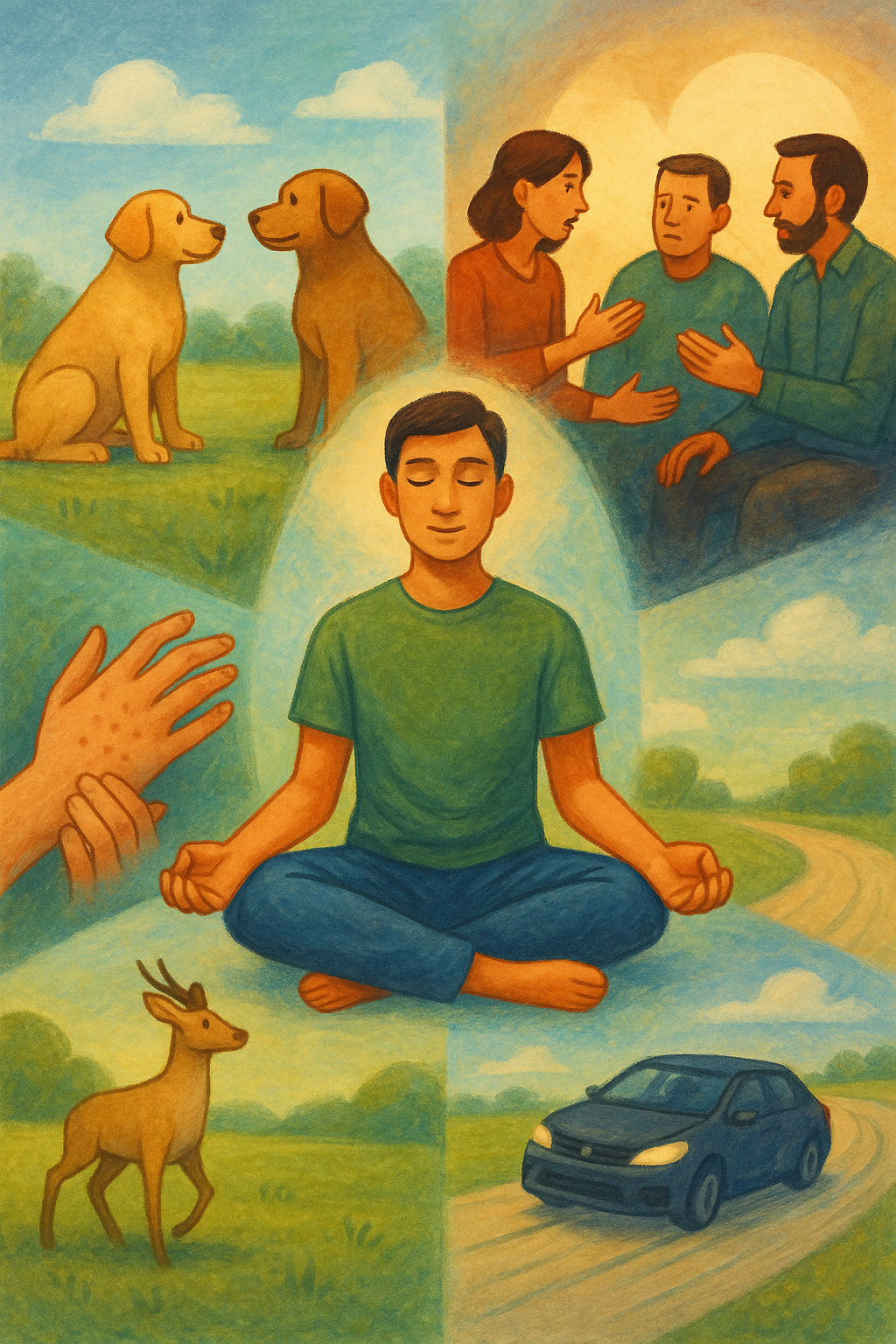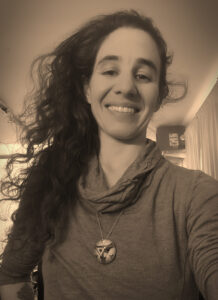Conflict exists.
Always has. Always will.
So why don’t we practice it?
We train for jobs.
We prepare for interviews.
We train for emergencies.
We rehearse speeches.
We train for sports, wildfires, childbirth, even cooking.
But conflict?
The most common, universal, everyday pressure point in human life?
The thing that happens in every home, every partnership, every team, every community?
We treat it like a surprise every time.
We act like it’s a failure.
Or a threat.
Like it shouldn’t be happening.
Like the presence of tension means someone did something wrong.
It’s doesn’t.
It just is.
It means you’re alive.
Conflict is feedback.
It’s motion.
It’s life doing what life does—pressing up against itself.
Even your skin gets into conflict.
That’s what a rash is.
An immune response. A protest. A signal.
And you don’t freak out over a rash.
You don’t scream at it or take it as proof your skin is evil.
You investigate.
You learn what caused it.
And then you respond skillfully.
That’s what we need to learn to do—
in conflict, with conflict, through conflict.
Dogs Know Something We Don’t
Ever watched two dogs snap at each other and then go right back to playing?
A dog snaps at another dog, then two minutes later they’re licking each other’s faces.
No shame spiral. No long post about betrayal. No six-month grudge.
Just a boundary expressed, received, and moved on from.
They reset.
We’ve lost that.
We’ve replaced it with overthinking, storytelling, moralizing.
We make conflict mean something.
That you’re bad. That I’m unsafe. That everything’s broken.
But what if it doesn’t mean anything?
What if it’s just feedback?
Like hunger.
Like a rash.
Like friction on the road telling you the turn is sharp.
It’s not an emergency.
It’s a condition.
A signal.
An invitation to engage more skillfully.
Because conflict isn’t personal.
It’s situational.
It’s how mammals test boundaries.
How they sort through tension without destroying the pack.
We could learn a lot from that.
We’ve become scared of something that doesn’t have to be scary.
We’ve pathologized disagreement.
We call everything “toxic” if it feels uncomfortable.
But discomfort is not danger.
And tension is not trauma.
The problem isn’t conflict. The problem is panic.
Most of us were never taught what to do with conflict.
So we default to freeze, flee, or fight.
We react from fear, not skill.
But what if we practiced instead?
Training for Conflict Like a Craft
Think of a stunt car driver.
The road is wet. The car slides.
An untrained driver panics—hits the brakes, yanks the wheel.
Crash.
But the stunt driver?
They steer into the skid.
They don’t panic.
They use the motion to reorient the vehicle.
They don’t fight the friction.
They work with it.
That’s what we’re learning here.
Not how to avoid conflict.
How to ride it.
How to respond instead of react.
How to operate with and within it—without losing center.
What Would Change If We Got Good at Conflict?
Not louder.
Not meaner.
Just better.
What if we trained for it like a muscle?
What if we knew how to:
- Stay grounded when someone challenges us?
- Name tension before it becomes explosion?
- Disagree without abandoning or attacking?
- Hear feedback without folding?
Conflict Isn’t the Problem. Panic Is.
The real issue isn’t disagreement.
It’s disregulation.
It’s the spinning thoughts.
The clenched jaw.
The way your voice changes,
or your body starts trying to run, even if you’re standing still.
Panic makes conflict dangerous.
Practice makes it useful.
When you know how to move with it,
you don’t need to fear it.
You can have hard conversations without breaking connection.
You can name a need without an apology.
You can disagree without destruction.
And the more you practice,
the less conflict you store.
No buildup. No blowups. No resentment clogging the system.
Just a steady rhythm of check-ins, repairs, redirects.
Like steering a bike.
Like a dog growling, then letting it go.
Conflict isn’t negative. It’s not mean. It’s not undesirable.
It just is.
Like gravity. Like weather. Like time.
So the question isn’t: how do we avoid it?
The question is:
When it comes—how do we move?
Are we flailing?
Or flowing?
Because conflict will come.
That’s guaranteed.
But panic?
Panic is optional.
Some Tools for the New Paradigm
- Learn to stay in your body.
Conflict gets dangerous when we leave ourselves.
Ground your feet. Relax your jaw. Breathe. That’s step one. - Watch for panic signs.
Your body will tell you when you’re slipping—tight chest, shallow breath, clenching.
That’s your cue. Not to run. To regulate. - Speak from sensation, not story.
“I’m tense” is different than “You’re attacking me.”
One opens a door. The other builds a wall. - Build range.
Like animals: some freeze, some bluff, some disengage.
We need range—not just one mode. Know when to hold. When to name. When to walk away. - Practice on the small stuff.
Conflict doesn’t just mean big blowups.
It’s the eye roll. The sarcastic tone. The unmet need.
Use those moments as training grounds.
The more conflict you handle,
the less conflict you store.
Fewer blowups.
Fewer grudges.
Cleaner systems.
More trust.
Conflict Only Takes One.
Here’s the thing: conflict doesn’t require two people.
It only takes one.
One person to snap, to shut down, to panic.
Collaboration, on the other hand?
That takes everyone.
That takes skill.
That’s another key truth.
Conflict can erupt from just one person.
But resolution? Connection? Co-creation?
That takes everyone in the room showing up.
So if we want to live in a world of collaboration,
we have to stop avoiding conflict—
and get good at operating inside it.
Conflict is not a flaw in the system.
It is the system.
Where growth happens.
Where clarity sharpens.
Where false peace gets burned off and real peace becomes possible.
So stop treating it like a problem.
Start treating it like a practice.
And when you do, I think you’ll find that conflict gets cleaner.
Shorter.
Less loaded.
Less sticky.
It doesn’t wreck your day.
Or your relationship.
Or your body.
It just becomes part of the rhythm—
a little turbulence, not a crash.
A sharp turn, not a pile-up.
And eventually—
you stop fearing it.
You stop avoiding conversations.
You stop holding your breath waiting for things to go wrong.
Because you know that even if they do—
you can handle it.
That’s the shift.
We stop living our lives trying to avoid impact,
and start living in a way that absorbs it—
moves with it—
transforms it.
That’s the work.
That’s the practice.
That’s the paradigm shift.
Conflict is.
So get good at it.
Amen


